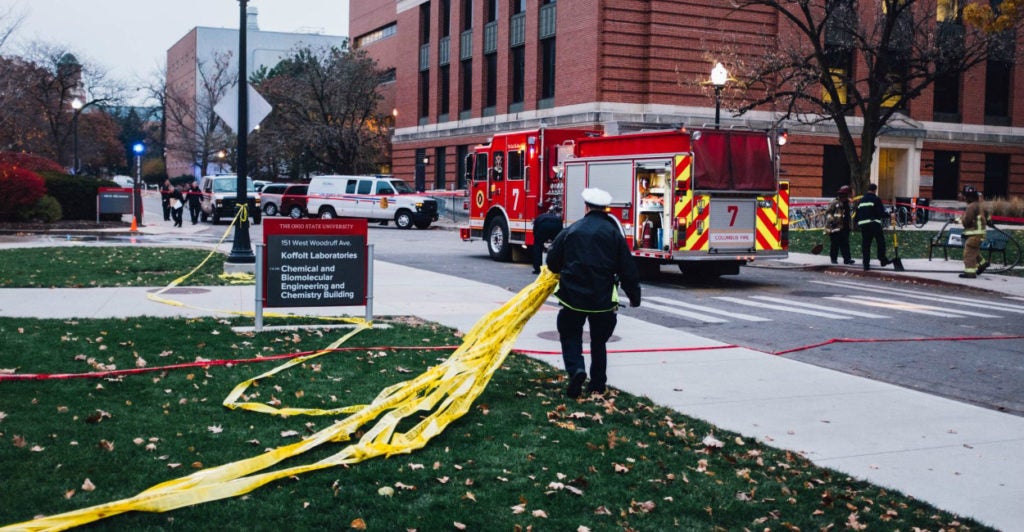This week, terror struck American soil once again—this time on a university campus.
On the morning of Nov. 28, Abdul Razak Ali Artan drove a car into a crowd of pedestrians on the campus of Ohio State University. He then got out of the car and began attacking those around him with a knife.
A nearby police officer, Alan Horujko, was able to respond within a minute, shooting and killing Artan when he refused to drop the knife. Eleven individuals were injured, all of whom are expected to survive.
Authorities believe that Artan may have been inspired by the Islamic State as well as the Yemeni-American propagandist Anwar al-Awlaki. Artan posted a rant against the U.S. on Facebook just before the attack.
Using a vehicle as a method of attack has been recommended by al-Qaeda and ISIS in their magazines and was also used in the terrorist attack in Nice, France, and at the University of North Carolina at Chapel Hill.
According to authorities, Artan was an 18-year-old student at the university. Of Somali descent, Artan was living in the U.S. as a legal permanent resident. Law enforcement officials and refugee resettlement agencies report that Artan and his family came to the U.S. in 2014 from Pakistan as refugees, where they had reportedly lived for seven years after fleeing Somalia.
While some of these details have yet to be officially confirmed, the evidence is clear enough to add this attack to the list of Islamist terror plots. This attack is the 93rd Islamist terrorist attack or plot against the U.S. homeland since 9/11 and the 12th plot or attack this year.
Including this attack, 14 successful Islamist terrorist attacks have occurred on U.S. soil since 9/11, five of which have been in 2016 alone. With Artan also appearing to have been radicalized here in the U.S., the total number of homegrown plots rises to 82 of the 93.
While the threat of complex, overseas-planned or supported terrorist attacks is still real (as evidenced by attacks in Paris and Brussels), the trend in the U.S. has been toward more basic and improvised attacks by homegrown lone wolves.
Such attacks can be difficult to detect—a reality reflected by the growing number of successful attacks in the U.S. As these individuals are already in the U.S. when they become radicalized, immigration vetting can do little, if anything, to detect these individuals.
If the U.S. is to stop homegrown terrorists, it must do more to empower local officials. Federal capabilities are incredibly important, but the threat of lone wolves requires all hands on deck.
To find and stop these lone wolves before they attack, U.S. leaders should work to advance the following policies:
- Building more effective communication lines between local law enforcement and the FBI.
- Ensuring that local law enforcement agents receive proper training on how to respond to terrorist attacks and active shooters.
- Helping local law enforcement build relationships with its community.
